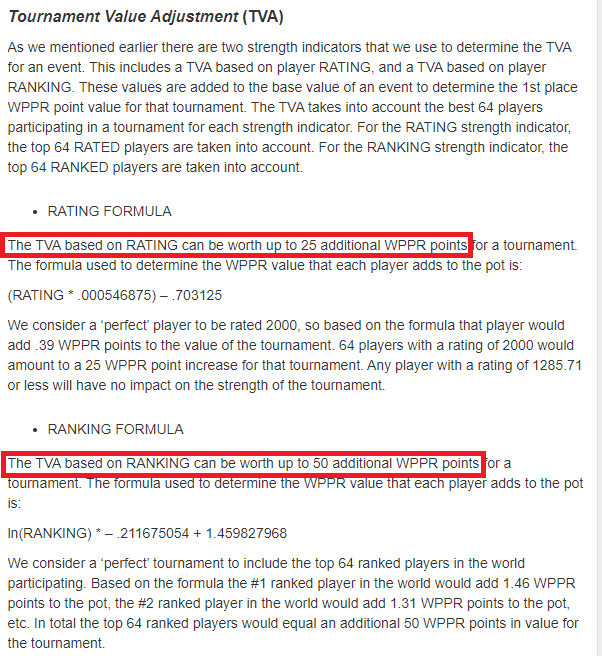California-23.63
Texas just behind WA at 22.88
My guess is the change to allow each individual event to stand on its own was the last big change. Prior to that, there was an annual restriction for locations? I can’t recall the details.
Definitely the last big change. This was the shift to v5.0 for the start of the 2015 season. We’re at version 5.6 now, but the core rules still have the foundation of the 2015 rules.
Here was the v5.0 proposal back in July 2014. Please note not all of these changes were implemented.
Here’s a basic list of changes:
-
No more distinctions for what a tournament is classified as: “Main vs. Side”, “Annual vs. Periodic”, “Launch Party vs. Charity Tournament”, etc. Every tournament will be looked as simply “a tournament”, with it’s own unique characteristics. Every tournament will be treated separately, graded separately, and listed on a player’s resume separately. Leagues will be looked at in the same exact manner as tournaments with respect to grading and valuation.
-
No more guaranteed base value of 25 points. Instead a tournament’s base value will be based on how many participants play in the tournament. The current proposal awards 1/2 base point per participant, up to a max base value of 32 points (any tournament with 64 or more players)
-
Every tournament will be graded based on the format. This grading percentage can be anywhere between 0% and 100%. The base value + TVA amount gets multiplied by whatever this is.
-
To properly grade a tournament, it has to do with the number of games a player plays in order to win the tournament. If there is unlimited qualifying involved, then time for open qualifying is also a factor. Current proposal is 4% per game played in the tournament, which can go up to 100% (for 25 or more games played in a tournament) if the tournament doesn’t involve unlimited qualifying. It can go up to 80% if there is unlimited qualifying, and then the remaining 20% is based on the number of hours qualifying is open (1% per hour)
-
Due to Main/Side tournaments being listed separately, and periodic tournaments listed separately, we’re expanding a players resume from the ‘top 15’ to most likely the ‘top 20’ events.
-
We have no interest in grading the past 4000 events to restate previous results, so any events pre 1/1/15 will be listed the ‘old way’ on a player’s resume.
-
The 4 Majors - PAPA/IFPA/EPC/PINBURGH will be worth 1.5X value . . . but only for the ‘main’ tournament. Classics/Side/Charity tournaments will all not have this multiplier attached.
-
We will most likely be making a change to the decay of tournaments to a 4-year cycle - 100/75/50/25/0
Please implement this before July 29th of this year. ![]()
PA is finally in for SCS - 24.38.
With the goal of having the top player have about 1000 WPPRs, how did you work backwards from that to design the 5.0 system? Did the 32 point cap and 4% per game numbers come out of looking at this goal?
The variable we actually played with was the number of events that counted towards your ranking. The “top 15 events” was expanded to “top 20 events” as part of this process.
The 32 point cap came from the IFPA World Championship limit of 64 players. This gave the IFPA WC the opportunity to be “the most valuable tournament” WPPR wise should the 64 highest ranked and highest rated players show up (which is impossible because that list doesn’t include the same 64 players across each metric).
The % per game was limited to numbers that were easily divided by 100, which meant 25 games played at 4%, or 20 games at 5%. Our baseline there was to make it as many games as possible while still making sure “important tournaments” graded out to 100%.
As a matter of interest, which adds the higher WPPR value- rating or ranking?
In all of our local events the Rating adds 2 or 3 times the value of the Ranking, due to the fact that we have very few highly ranked players. I would imagine that is the case in most areas.
I believe it’s on an area to area basis.
In Pittsburgh, it’s hard to get a high rating without also having a high ranking. Even small tournaments are worth a fair amount of WPPRs, and performing well generally means running through a gauntlet of top 100/200 players.
Conversely, if a highly ranked player performs poorly in one tournament, their rating tanks (potentially a few hundred spots) based on one event while their ranking remains the same.
I’ve noticed it’s way harder to maintain a rating than a ranking at the top end.
